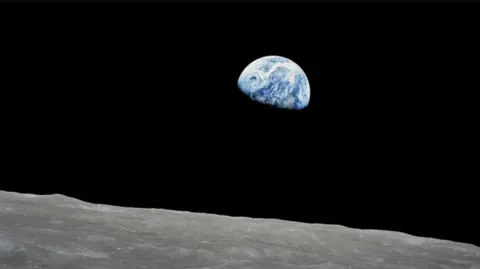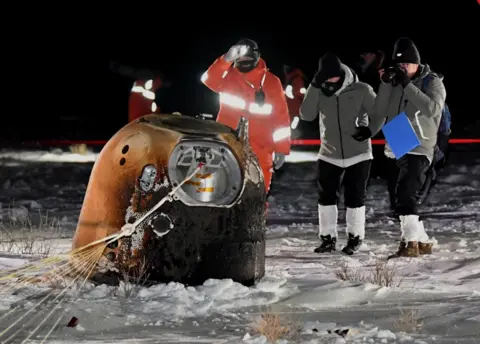Foreign News
Canadian police make arrests in prominent Sikh activist’s killing

Police in Canada have made arrests in the fatal 2023 shooting of prominent Sikh-Canadian activist Hardeep singh Nijar, months after authorities accused Indian government agents of being involved in the killing.
The Royal Canadian Mounted Police (RCMP) in Canada’s westernmost province of British Columbia said on Friday afternoon that three people were arrested as part of an ongoing investigation into Nijjar’s killing.
The three individuals — all Indian nationals — were arrested in Edmonton, Alberta, and charged with first-degree murder and conspiracy to commit murder, RCMP Superintendent Mandeep Mooker told reporters. “This investigation does not end here. We are aware that others may have played a role in this homicide, and we remain dedicated to finding and arresting each one of these individuals,” Mooker said.
He added that police are “investigating if there are any ties to the government of India”.
“However, as I said, it’s an ongoing investigation and I don’t have any information to provide on that matter at this time.”
Nijjar was fatally shot on June 18, 2023, outside a Sikh temple in Surrey, British Columbia, spurring widespread condemnation.
A few months later, Canadian Prime Minister Justin Trudeau said the country’s security agencies were investigating “credible allegations of a potential link” between Indian government agents and Nijjar’s killing.
“Any involvement of a foreign government in the killing of a Canadian citizen on Canadian soil is an unacceptable violation of our sovereignty,” Trudeau said in an address to Canada’s parliament in September of last year. “In the strongest possible terms, I continue to urge the government of India to cooperate with Canada to get to the bottom of this matter.”
His comments spurred a fierce response from India, which rejected the allegations as “absurd” and politically motivated. New Delhi also accused Canada of not doing enough to stem anti-India activism and “Sikh extremism”.
But Indian Prime Minister Narendra Modi’s government has long faced allegations of targeting political opponents, journalists and religious minorities, including Muslims and Sikhs, in what rights groups have said is a continuing effort to stifle dissent.
At the time of Nijjar’s killing, tensions had been growing between Canada and India over a Sikh campaign for a sovereign state in India’s Punjab region. Known as the Khalistan movement, the campaign has supporters in Canada.
Nijjar served as president of the Guru Nanak Sikh Gurdwara, the temple where he was killed. He was among those advocating for Khalistan.
Asked to comment on Friday’s reports that arrests were made in the case, Canada’s Public Safety Minister Dominic LeBlanc referred reporters’ questions to the RCMP.
“You’ll understand that the developments with respect to the murder of a Canadian citizen, Mr Nijjar, are part of an ongoing police operation. This operation started today. It is still an active police operation,” LeBlanc said in Ottawa.
The RCMP identified the three men arrested on Friday as Kamalpreet Singh, Karanpreet Singh and Karan Brar.
Mooker, the police superintendent, said all three were non-permanent residents of Canada and had been in the country for between three to five years.
CBC News reported earlier in the day that, according to unnamed sources, “members of the hit squad are alleged to have played different roles as shooters, drivers and spotters” on the day Nijjar was killed.
“Sources said investigators identified the alleged hit squad members in Canada some months ago and have been keeping them under tight surveillance,” the Canadian broadcaster said.
The High Commission of India in Ottawa did not immediately respond to Al Jazeera’s request for comment on Friday afternoon.
Nijjar’s killing continues to raise questions around allegations of Indian foreign interference, particularly within Sikh diaspora communities in Canada, the United States and other countries.
In September, Moninder Singh at the BC Gurdwaras Council told Al Jazeera that he was among five Sikh leaders — including Nijjar — who were warned by the RCMP’s national security division in 2022 about threats against their lives.
On Friday, Danish Singh, president of the World Sikh Organization of Canada advocacy group, welcomed the arrests in Nijjar’s case but said they also raise new questions.
“While the arrest of the hit squad is important, what’s even more important is identifying and bringing to justice those who directed these operations,” Singh said in a statement, accusing the Indian government of being involved.
Reports of an alleged plot to kill another prominent Sikh separatist leader in the US have also emerged following Nijjar’s death. In late November, the US Department of Justice announced charges against a 52-year-old Indian national, Nikhil Gupta.
Gupta was accused of being part of a foiled attempt to assassinate US citizen Gurupatwant Singh Pannun, in coordination with an Indian government employee and others.
The Washington Post reported earlier this week that US intelligence agencies determined that the operation to target Pannun was approved by the then-head of India’s foreign intelligence agency, known as RAW.
The Indian government rejected those allegations as “unwarranted” and “unsubstantiated”, according to media reports.
On Monday, White House spokesperson Karine Jean-Pierre described the Washington Post report as “a serious matter”.
“The government of India has been very clear with us that they are taking this seriously and will investigate — and we expect that accountability from the government,” Jean-Pierre told reporters during a news briefing.
She added that Washington would continue to raise concerns with New Delhi.
(Aljazeera)
Foreign News
Nasa ‘Earthrise’ astronaut dies at 90 in plane crash

Apollo 8 astronaut Bill Anders, who snapped one of the most famous photographs taken in outer space, has died at the age of 90.
Officials say a small plane he was flying crashed into the water north of Seattle, Washington.
Anders’ son Greg confirmed that his father was flying the small plane, and that his body was recovered on Friday afternoon. “The family is devastated. He was a great pilot. He will be missed,” a statement from the family reads.
Anders – who was a lunar module pilot on the Apollo 8 mission – took the iconic Earthrise photograph, one of the most memorable and inspirational images of Earth from space.
Taken on Christmas Eve during the 1968 mission, the first crewed space flight to leave Earth and reach the Moon, the picture shows the planet rising above the horizon from the barren lunar surface.
Anders later described it as his most significant contribution to the space programme.

The image is widely credited with motivating the global environmental movement and leading to the creation of Earth Day, an annual event to promote activism and awareness of caring for the planet.
Speaking of the moment, Anders said: “We came all this way to explore the Moon, and the most important thing that we discovered was the Earth.”
Officials said on Friday that Anders crashed his plane around 11:40PDT (1940BST).
The US National Transportation Safety Board (NTSB) said the 90-year-old was flying a Beechcraft A A 45 – also known as a T-34. The agency said that the plane crashed about 80ft (25m) from the coast of Jones Island.
Anders also served as the backup pilot to the Apollo 11 mission, the name of the effort that led to the first Moon landing on July 24, 1969.
Following Anders’ retirement from the space programme in 1969, the former astronaut largely worked in the aerospace industry for several decades. He also served as US Ambassador to Norway for a year in the 1970s.
But he is best remembered for the Apollo 8 mission and the iconic photograph he took from space.
“In 1968, during Apollo 8, Bill Anders offered to humanity among the deepest of gifts an astronaut can give. He traveled to the threshold of the Moon and helped all of us see something else: ourselves,” Nasa Administrator Bill Nelson said in a statement.
Mark Kelly, a former astronaut who now serves as a US Senator for the state of Arizona, said in a post on X, formerly Twitter, that Anders “inspired me and generations of astronauts and explorers. My thoughts are with his family and friends”.
[BBC]
Foreign News
China’s Chang’e-6 lifts off from far side of Moon with rock samples

A Chinese spacecraft carrying rock and soil samples from the far side of the Moon has lifted off from the lunar surface to start its journey back to Earth, according to state media.
The achievement on Tuesday is a world first and the latest leap for Beijing’s decades-old space programme, which aims to send a crewed mission to the Moon by 2030.
The Xinhua News Agency, citing the China National Space Administration (CNSA), said that the ascender of the Chang’e-6 probe took off at 7:38am local time on Tuesday (23:38 GMT) and entered a preset orbit around the moon.
It described the move as “an unprecedented feat in human lunar exploration history”.
The Chang’e-6 probe was launched last month and its lander touched down on the far side of the Moon on Sunday. It used a drill and robotic arm to dig up soil on and below the Moon’s surface, according to Xinhua.
After successfully gathering its samples, the Chang’e-6 unfurled China’s national flag for the first time on the far side of the Moon, it said.
The agency cited the CNSA as saying that the spacecraft stowed the samples it had gathered in a container inside the ascender of the probe as planned.
[Aljazeera]
Foreign News
China says its spacecraft lands on Moon’s far side

China says its uncrewed craft has successfully landed on the far side of the Moon – an unexplored place almost no-one tries to go.
The Chang’e 6 touched down in the South Pole-Aitken Basin at 06:23 Beijing time on Sunday morning (22:23 GMT Saturday), the China National Space Administration (CNSA) said.
Launched on 3 May, the mission aims to collect precious rock and soil from this region for the first time in history. The probe could extract some of the Moon’s oldest rocks from a huge crater on its South Pole.
The landing was fraught with risks, because it is very difficult to communicate with spacecraft once they reach the far side of the Moon. China is the only country to have achieved the feat before, landing its Chang’e-4 in 2019.
After launching from Wenchang Space Launch Center, the Chang’e 6 spacecraft had been orbiting the Moon waiting to land. The lander component of the mission then separated from the orbiter to touch down on the side of the Moon that faces permanently away from Earth.
During the descent, an autonomous visual obstacle avoidance system was used to automatically detect obstacles, with a visible light camera selecting a comparatively safe landing area based on the brightness and darkness of the lunar surface, the CNSA was quoted as saying by state-run Xinhua news agency.
The lander hovered about 100m (328ft) above the safe landing area, and used a laser 3D scanner before a slow vertical descent. The operation was supported by the Queqiao-2 relay satellite, the CNSA said.
Chinese state media described the successful landing as an “historic moment”. The state broadcaster said “applause erupted at the Beijing Aerospace Flight Control Center” when the Chang’e landing craft touched down on the Moon early on Sunday morning.
The lander should spend up to three days gathering materials from the surface in an operation the CNSA said would involve “many engineering innovations, high risks and great difficulty”. “Everyone is very excited that we might get a look at these rocks no-one has ever seen before,” explains Professor John Pernet-Fisher, who specialises in lunar geology at the University of Manchester.
He has analysed other lunar rock brought back on the American Apollo mission and previous Chinese missions. But he says the chance to analyse rock from a completely different area of the Moon could answer fundamental questions about how planets form.
Most of the rocks collected so far are volcanic, similar to what we might find in Iceland or Hawaii. But the material on the far side would have a different chemistry . “It would help us answer those really big questions, like how are planets formed, why do crusts form, what is the origin of water in the solar system?” the professor says.
The mission aims to collect about 2kg (4.4lb) of material using a drill and mechanical arm, according to the CNSA.
The South Pole–Aitken basin, an impact crater, is one of the largest known in the solar system.
From there, the probe could gather material that came from deep inside the lunar mantle – the inner core of the Moon – Prof Pernet-Fisher says.
The Moon’s South Pole is the next frontier in lunar missions – countries are keen to understand the region because there is a good chance it has ice.

The capsule in the last Chinese moon mission, Chang’e 5, brought back soil and rocks in 2020 (BBC)
Access to water would significantly boost the chances of successfully establishing a human base on the Moon for scientific research.
If the mission succeeds, the craft will return to Earth with the precious samples on board a special return capsule.
The material will be kept in special conditions to try to keep it as pristine as possible.
Scientists in China will be given the first chance to analyse the rocks, and later researchers around the world will be able to apply for the opportunity too.
This is the second time China has launched a mission to collect samples from the Moon.
In 2020 Chang’e 5 brought back 1.7kg of material from an area called Oceanus Procellarum on the Moon’s near side.
China is planning three more uncrewed missions this decade as it looks for water on the Moon and investigates setting up a permanent base there.
Beijing’s broader strategy aims to see a Chinese astronaut walk on the moon by around 2030.
The US also aims to put astronauts back on the moon, with Nasa aiming to launch its Artemis 3 mission in 2026.
(BBC)
























